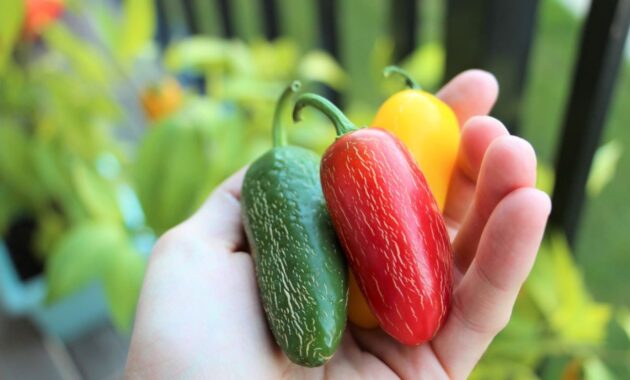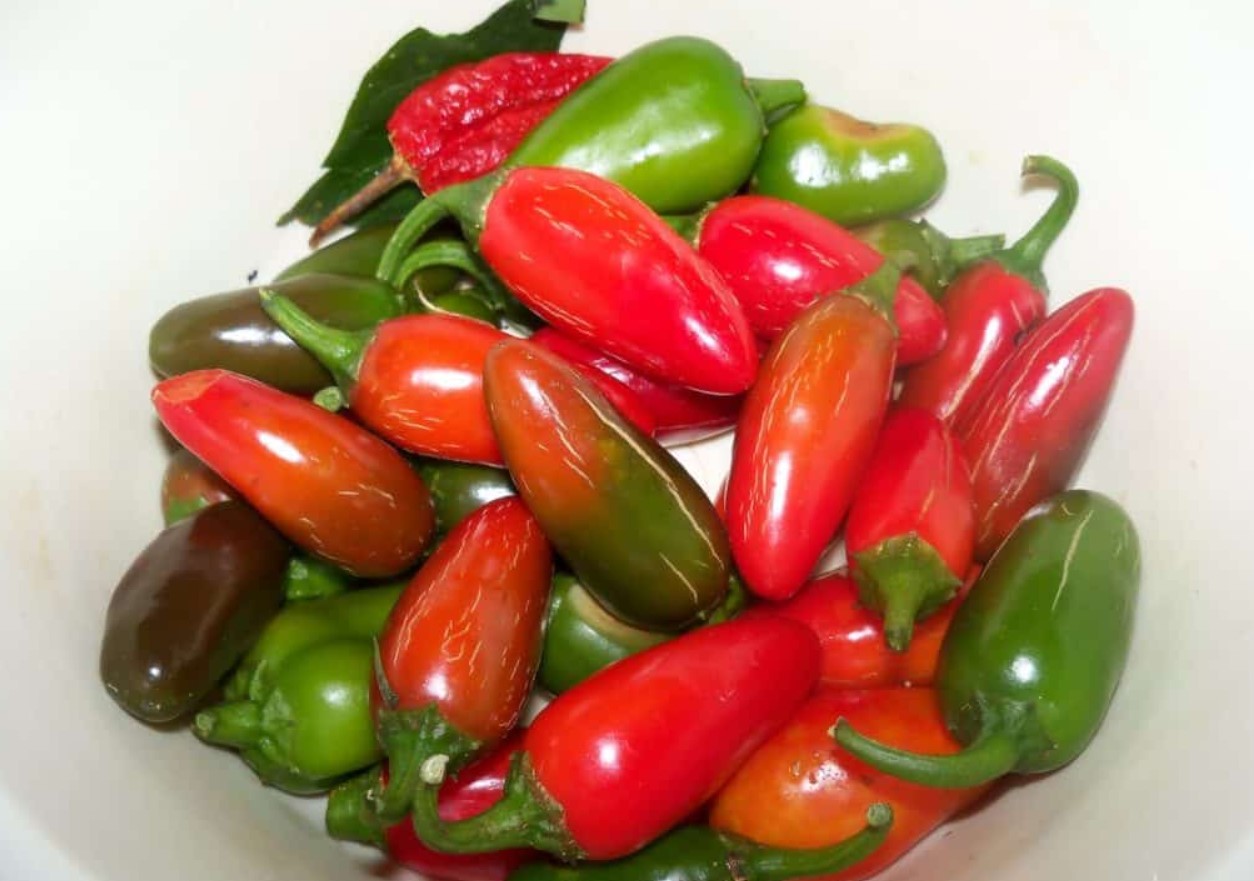
The jalapeño is one of the most popular and widely used chili peppers, known for its moderate heat and versatile flavor. Whether you’re a fan of spicy salsas, pickled peppers, or want to add a kick to your dishes, jalapeños are a go-to choice. In this guide, we’ll explore the characteristics, growing tips, culinary uses, and health benefits of this fiery little pepper.
Key Characteristics of Jalapeño
| Feature | Description |
|---|---|
| Scientific Name | Capsicum annuum var. jalapeño |
| Common Names | Jalapeño, chile gordo |
| Origin | Mexico |
| Heat Level | 2,500–8,000 Scoville Heat Units (SHU) |
| Size | 2–4 inches long, about 1 inch wide |
| Color | Green when immature, turns red when ripe |
| Plant Type | Annual in temperate climates, perennial in tropical climates |
Flavor and Heat Profile
Jalapeños are known for their mild to moderate heat, making them ideal for people who enjoy a bit of spice without overwhelming intensity. The flavor of jalapeños is fresh, slightly grassy, and tangy. When ripe, they turn red and have a slightly sweeter, fruitier taste with the same heat level.
- Scoville Heat Units (SHU): 2,500–8,000, which is moderate compared to hotter peppers like habaneros or ghost peppers.
Growing Jalapeños: A Complete Guide
1. Location and Climate
Jalapeños thrive in warm climates and love full sun. Choose a spot in your garden that receives at least 6-8 hours of sunlight per day. These peppers do best in temperatures ranging from 70°F to 90°F (21°C to 32°C).
- Outdoor: Ideal in garden beds or large containers in sunny locations.
- Indoor: If grown indoors, make sure the plant gets plenty of light, using grow lights if necessary.
2. Soil Requirements
Jalapeño plants prefer well-drained, fertile soil with a pH between 6.0 and 6.8. Enrich the soil with organic matter like compost to encourage healthy growth.
- Fertilizer: Use a balanced fertilizer (such as 10-10-10) when planting, then again when the plant starts flowering.
3. Planting Jalapeño Seeds
- Starting Indoors: Start seeds indoors about 8-10 weeks before the last frost date. Sow the seeds 1/4 inch deep in seed-starting mix.
- Temperature: Keep the seeds warm (70-80°F) for good germination, which usually takes 7-14 days.
- Transplanting Outdoors: After the risk of frost has passed, transplant seedlings outdoors, spacing them 12-18 inches apart.
4. Watering and Care
- Watering: Keep the soil evenly moist but not waterlogged. Water the plants at the base, avoiding overhead watering to reduce the risk of diseases.
- Mulching: Use mulch around the base of the plants to retain moisture and regulate soil temperature.
5. Pests and Diseases
- Aphids and Spider Mites: These common pests can be controlled with insecticidal soap or neem oil.
- Blossom End Rot: Caused by calcium deficiency or inconsistent watering. To avoid this, water regularly and ensure the soil has adequate calcium.
Harvesting Jalapeños
Jalapeños can be harvested when they are deep green and about 2-4 inches long. For a sweeter flavor, you can leave them on the plant until they turn red. The heat and flavor become more intense as they ripen.
- How to Harvest: Use scissors or garden shears to cut the peppers from the plant, leaving a small portion of the stem attached.
Culinary Uses of Jalapeños
Jalapeños are incredibly versatile in the kitchen and are used both fresh and cooked. Here are some popular culinary applications:
1. Fresh Jalapeños
- Salsas: Add fresh jalapeños to salsas for a spicy kick. They pair perfectly with tomatoes, onions, and cilantro.
- Salads: Slice jalapeños thinly and add to salads for an extra burst of heat and crunch.
- Guacamole: Finely chopped jalapeños add heat and flavor to guacamole.
2. Cooked Jalapeños
- Grilled or Roasted: Roasting jalapeños enhances their smoky flavor. Grilled jalapeños can be used in tacos, sandwiches, or as a topping for burgers.
- Stuffed Jalapeños: Popular as jalapeño poppers, they can be stuffed with cream cheese, meats, or rice, and then baked or fried.
- Jalapeño Relish: Cooked jalapeños can be made into a spicy relish, perfect for adding to hot dogs, burgers, or sandwiches.
3. Pickled Jalapeños
Pickled jalapeños are a common way to preserve the peppers and are widely used in Mexican cuisine. They add a tangy, spicy flavor to nachos, tacos, and salads.
- How to Pickle: Simply slice jalapeños, place them in a jar with vinegar, salt, and spices, and let them marinate for a few days.
Health Benefits of Jalapeños
Jalapeños aren’t just delicious—they are also packed with nutrients and have several health benefits:
- High in Vitamin C: A single jalapeño contains more vitamin C than an orange, making it great for boosting your immune system.
- Rich in Antioxidants: The capsaicin in jalapeños is a powerful antioxidant that can help reduce inflammation.
- Metabolism Booster: Capsaicin has been shown to boost metabolism and aid in fat burning, which can be beneficial for weight loss.
- Pain Relief: Topical creams with capsaicin can relieve joint and muscle pain.

Fun Facts About Jalapeños
- Name Origin: The name “jalapeño” comes from Jalapa, a city in Mexico where the pepper was traditionally grown.
- Capsaicin Content: The heat in jalapeños comes from capsaicin, a compound that binds to pain receptors in the mouth and throat, causing the burning sensation.
- National Dish: Jalapeños are a key ingredient in many traditional Mexican dishes, making them a national symbol of spicy cuisine.
Conclusion: Why Grow Jalapeños?
Jalapeños are an easy-to-grow, highly versatile pepper that can be used in countless dishes. Their moderate heat level makes them approachable for most palates, while their flavor enhances a wide variety of culinary creations. With just a little care, you’ll be able to enjoy a bountiful harvest of fresh jalapeños that can be eaten fresh, cooked, or preserved for later use. Whether you’re a fan of spicy food or just want to add some zest to your meals, jalapeños are a must-have plant for any home gardener or chef!



